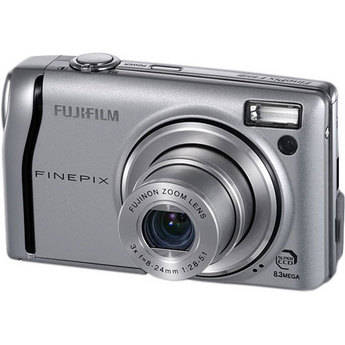After my recent trip to Iceland, where I took three cameras and was disappointed with the results, I came to the conclusion that compact, point-and-shoot cameras only have one thing going for them: They’re compact.
When I first made the plunge into digital photography, I bought an Olympus C3030-Zoom 3.3 megapixel camera. I bought it because Olympus is/was a respected name in photography, and the camera looked like a serious photographer’s tool.

Olympus C3030-Zoom
Digital photography was taking off, and soon the C3030 was pretty much obsolete. It also went through batteries like crazy; I had a rechargeable power pack that I hooked to my belt to keep the juice flowing to the camera.
As I traveled, and world events made it harder to pack and carry luggage, I chose to “go small” and while in Denver, Colorado, decided to buy a “pocket camera,” the Fuji Finepix f40fd.

Fujifilm Finepix f40fd
At eight megapixels, the Fuji had over twice the image power of the Olympus despite its very compact form factor. I even bought a belt pouch to carry it in, so that I could whip it out on a moment’s notice. Unfortunately, digital cameras have been evolving, and so now they also take movies, include special effects, and have more settings than the hairs on my head. With aging eyes and the desire to take “grab shots,” squinting at dials and having to use a display panel rather than a viewfinder, a lot of the shots I took didn’t turn out the way I’d hoped.
Once again, I “moved up.” My next purchase was based on the emerging “mirror-less” form factor, also known as a four-thirds camera. I bought a package deal that included the (then) new Nikon 1 and two lenses that Nikon had designed specifically for this line of cameras.

Nikon 1 J1 with two lenses
Complete with camera bag, charger and USB cable, this package could still fit inside my suitcase. If I packed judiciously, I could still have all my luggage as carry-on.
Once again, the size got in the way. With all the features (and the need to convert image size into something I could work with mentally), I wound up getting “stuck” at the wrong time, choosing the right lens, trying to focus, choose settings, compose the photo, and shoot. I can’t begin to count the shots I missed just getting ready for it.
Thus, I upon my return from my latest trip, I decided to go back to what I knew. In college, I had actually made money with a Minolta SRT-101 35mm SLR and a bag full of equipment (lenses, flash, tripod, filters, etc.). I know I’m not a bad photographer, and an artist doesn’t blame his tools, so I figured sacrificing the false economy and comfort of a small camera for that which I was more familiar was the way to go.
So, last week I plunked down the cash for another “move up.” I bought a Nikon D7100 DSLR (or is it more properly written, dSLR?) with two lenses, bag, wireless connector (for uploading directly to a smartphone) and even signed up for a course to learn how to use it!

Nikon D7100
A few days later, I ordered a third lens, a fixed focal length (35mm) “fast” (f/1.8) lens that I expect to use as a “walking around lens.”
Now, all I have to do is walk around, and take photographs!

Excellent choice. You will never outgrow your D7100.